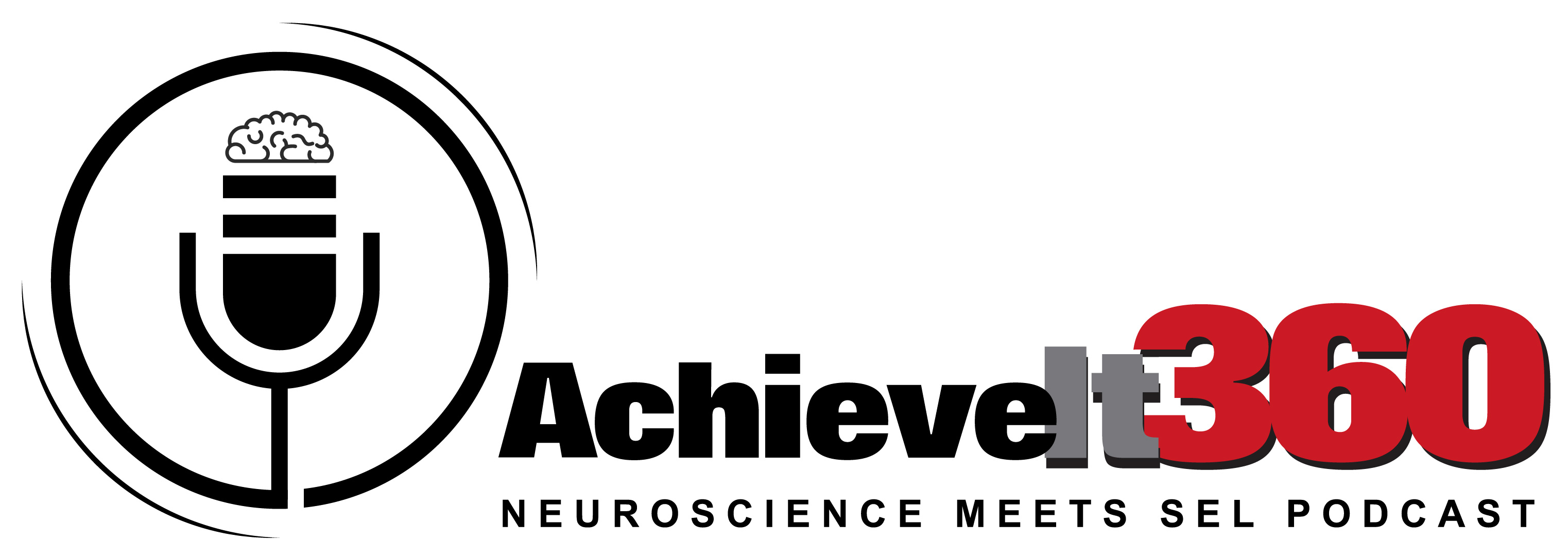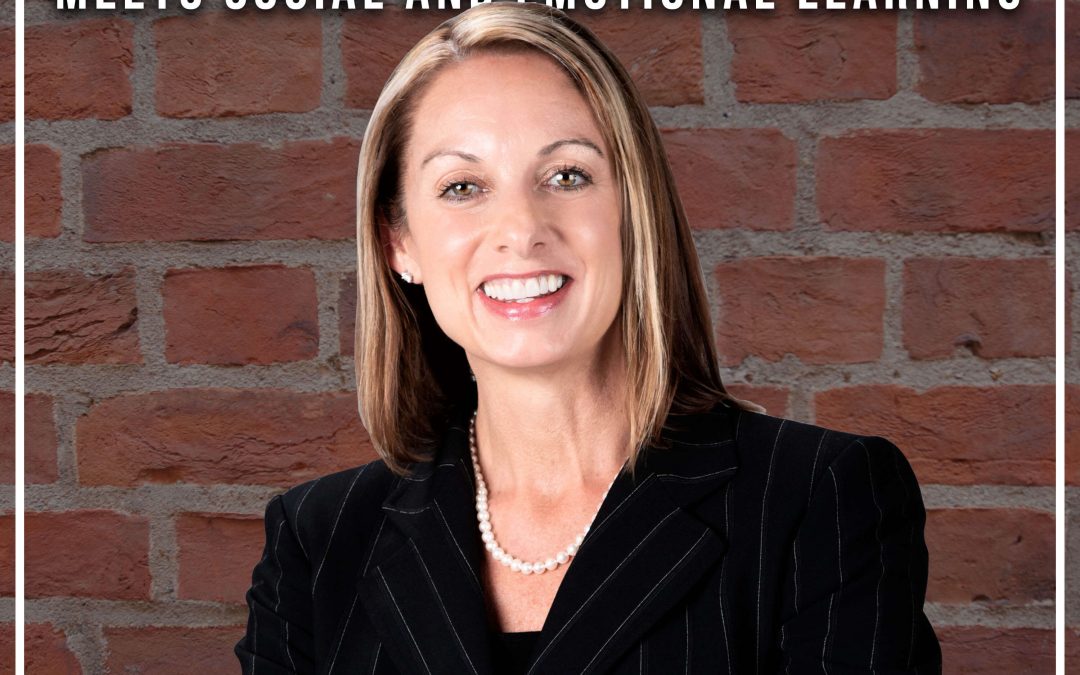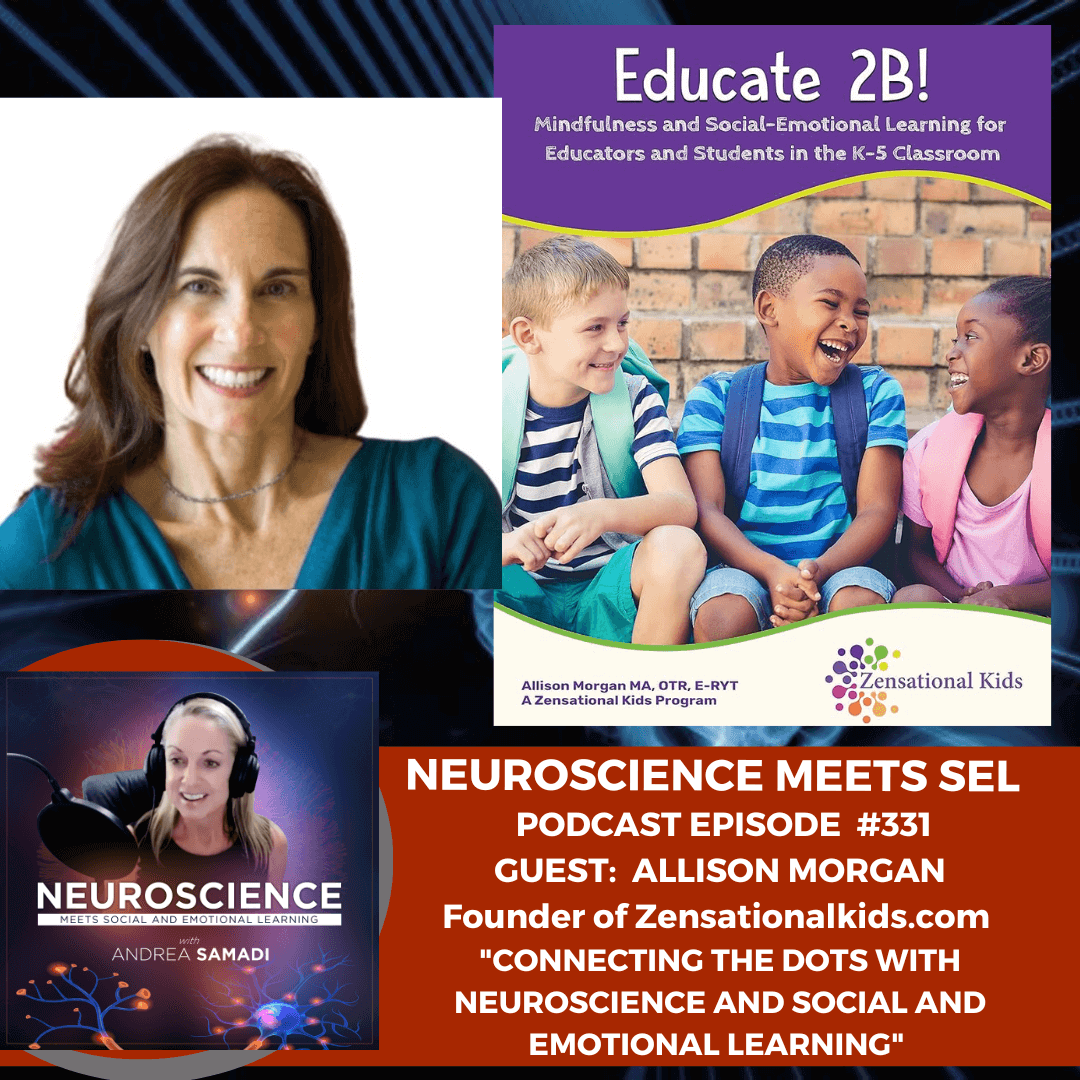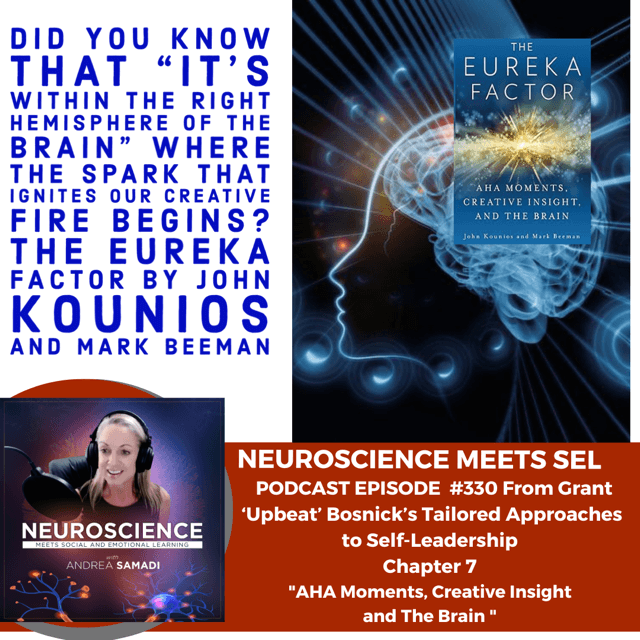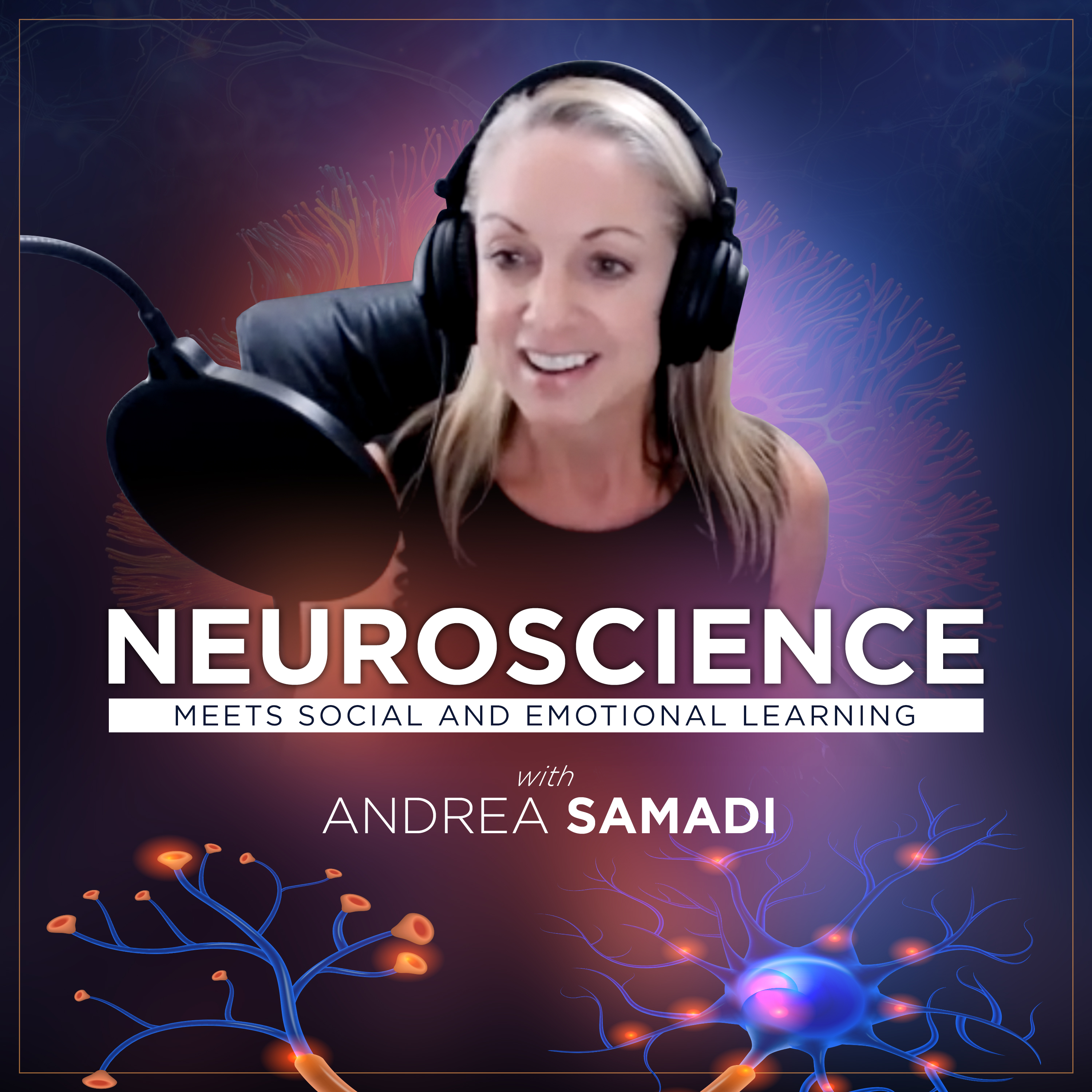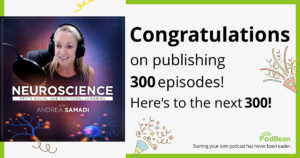Welcome back to the “Neuroscience Meets SEL Podcast” this is Andrea Samadi. As a recap, in our first episode, we shared with you the “Why behind implementing an SEL/emotional intelligence training program in your school or workplace.” The second episode we introduced the first of six social and emotional learning competencies that we will be diving deep into over the next six weeks. (Self-awareness, Social Awareness, Relationships, Responsible Decision-Making, Self-Regulation and Mental Mindset). With each competency, we’ll investigate the best practices and strategies that educators/and the workplace can use for themselves to develop and improve their own SEL/Emotional Intelligence and well-being practice, before extending these strategies to their districts, schools, classrooms, workplaces and communities. We’ll offer ideas, tools and resources (in the show notes section)—be sure to take a look at the resources, so that anyone can apply these skills themselves, and then teach others for improved results, focus and productivity.
Today we are going to dive deep into the relationship competency. We did cover this topic in an interview with Assistant Superintendent of Schools from Chicago, and author of the book, Significant 72: Unleashing the Power of Relationships in Today’s Schools, Greg Wolcott. Be sure to see episode 8 with Greg, to learn more about the research behind relationship building and academic achievement.
In addition to schools, relationship building is proving to be the key to success and well-being and the attribute that ties all the pieces in your life together. Dr. Daniel Siegel, a clinical professor of psychiatry at the UCLA School of Medicine and Executive Director of the Mindsight Institute, proposes in his book “The Developing Mind” that “relationships represented the three aspects of one reality essential to human well-being”[1] (he calls these the 3 Rs, relationships, reflection and resilience) and that “human connections shape neural connections, and each contributes to (developing the) mind.”[2] He explains that “we need to teach more in schools than just reading, writing and arithmetic. We should have reflection, relationships and resilience as the 3 Rs.”[3]
Let’s Dive Deeper into Understanding Communication, Relationships and Your Brain:
If you want to strengthen your relationship with another person, relate to them better, and have them relate to or understand you better, you must remain “relaxed, observant, and nonjudgmental.” Otherwise, the person that you are interacting with will “feel and connect to your inner stress, causing their brain to assume a defensive stance”[i] and they won’t trust you. Having the ability to “watch a person’s face, their gestures, and their tone of voice”[4] will cause their brain to align with yours, forming a process called “neural resonance” that allows the closest connection between what two people are thinking and feeling.
Here are Five Ways to Train Your Brain to Connect to Others Mindfully
-
- Remember to observe others mindfully. Before you engage with someone else, always take time to connect this person at the deepest level possible. If you notice facial expressions or body language, ask questions like “how are things going today?” to connect with them and learn more about what could be happening in their world.Always interact with others in a fair and kind manner. Listen to others without judgement and demonstrate that they matter to you by leaning towards them when they speak and then be sure your body language and facial expression matches what you want to convey, in a supportive manner. Show them that you are actually listening.Bring warmth to the tone of your voice with every person you interact with. “If you drop the pitch of your voice, you’ll automatically talk more slowly, allowing the listener to better understand you. This strategy was originally developed and tested in 2011 at the Department of Communication Science and Disorders at the University of Houston to help oncologists present bad news to patients.”
-
- Add kindness and compassion activities to your day. “Nearly one hundred peer-reviewed experiments, conducted at universities around the world, have concluded that when practiced for 30 minutes three times a week for a month, it strongly increases positive emotions, improved interpersonal interactions and prosocial behavior, and deepens one’s understanding of others.”
-
- Make an effort to do random acts of kindness for others. We all know how good these feel to be on the giving and receiving end of kindness.Practice forgiveness. At Virginia Commonwealth University, researchers found “that the ability to consciously replace unforgiving feelings with positive feelings affects the peripheral and central nervous system, increasing your own feelings of well-being.”
-
- Researchers have found that being unforgiving can be “damaging to your health, while emotional forgiveness of others reduces anger and stress.”
- Remember that you can exert your energy more productively if you don’t waste it on negative emotions that zap energy that could be used somewhere else.
FOR PRACTICAL APPLICATIONS FOR THE CLASSROOM:
Ensure everyone feels valued and appreciated. Help students develop meaningful relationships. Make sure you build a support infrastructure with staff to support educator well-being. When one teacher falls, it affects everyone.
“Children are more likely to be respectful when important adults in their lives respect them. They are more likely to care about others if they know they are cared about. Marzano (2003) states that students will resist rules and procedures along with disciplinary actions if the foundation of a good relationship is lacking. He goes on to assert that relationships are perhaps more important at the elementary and junior high levels than at the high school level. And according to Zehm and Kottler (1993), students will never trust us or open themselves up to hear what we have to say, unless they sense that we value and respect them.” [iii]
3 Tips for Improving Relationships in the Classroom:
-
- Creating Connections: Research shows that greeting the student at the door produces a 20 percent increase in academic engagement and a nine percent decrease in disruptive behavior. It creates a connection where students feel “seen, heard and valued; where they give without judgement; and when they derive strength from the relationship.”
-
- Gina Connell, in her article
10 Ways to Build Relationships with Students This Year
-
- adds the importance of saying goodbye to this daily routine. At the end of the day, she stands at the classroom door, wishing them a good evening, offering closure to a productive day.
-
- Building Trust: When I think back to my favorite teacher, Mr. Walker, from 5th and 6th grade, I remember that he had a special nickname for each student. The unique name made us feel special, valued and that we mattered. If a nickname is too much, calling students by their names, is one of the most effective ways we can show their uniqueness.Boost Personalized Learning: Juab School District in Utah improved their high school graduation rates from 78% to 97% by “rethinking what was considered nonnegotiable, to help all students learn more. Class periods could be lengthened, lunch periods could be moved around, deadlines could be changed – all in service of student learning.”
-
- Superintendent Jim Shank made changes including “redesigning its grading system, changing the length of class periods in the high school, switching from iPods to iPads and better using those devices to transform instruction rather than just provide a new medium for traditional activities. At the center of personalized learning has been to focus on building relationships with students every day.”
So How Does Relationship Building Translate into the Workplace?
At the heart of relationship building in the workplace, is the ability to be socially mindful as all employees work towards achieving company and personal goals. Many of these competencies overlap, and work together, but here’s some suggestions:
-
- Winn Claybaugh, the Dean of Paul Mitchell Schools emphasizes the importance of choosing the right wording in his team meetings, so they are focused on finding solutions instead of solving problems.
-
- Be careful of what you say and how you say it. Don’t open up the meeting with “I’ve got a ton of problems to discuss!” Turn it around to say, “I’m looking for some solutions to the following problems.” You can feel the difference just by saying it this way. Even saying “I don’t like that idea” can cause interpersonal distress
-
- so be mindful of framing your responses so that the conversation flows in a way that solutions can be found.The research is clear. “Rapid speaking can cause people to distrust you whereas slower speaking will deepen their respect.”
-
- We all know it’s important to slow down when speaking, but there is more reason to slow down when we know how our rate of speech impacts how others perceive us. As we mentioned before, slowing down your rate of speech and adding a warm tone to your voice “neurologically improves listener comprehension and reduces stress.”
- Be clear about what you would like to accomplish and keep meetings short. Practice speaking briefly and getting your points across in 20 seconds or less and allow time for others to respond to you. This will help you to learn how to be very clear about what you are saying, and prevent time wasting. When I was working with neuroscience researcher Mark Waldman on a project, he asked me to tell him what I wanted to say in 10 words or less. I found this really difficult to do (since I often had a lot that I needed his help with and to say) and I often just sat there, not knowing how to reduce what I wanted to say to 10 words. It was a powerful activity to train your brain to be clearer in conversations.
Outcomes and Results:
In schools, “Creating strong educational environments for ALL learners continues to be at the forefront of conversations with school systems across the globe.” Professor John Hattie, in his groundbreaking book, Visible Learning: A Synthesis of Over 800 Meta-Analyses Relating to Achievement (2009), set out to identify which strategies and innovations have the greatest impact on student achievement in schools. His research from over 50,000 educational research studies on 236 million school aged students found that teacher-student relationships have an effect size of .72 (which means that strong teacher-student relationships leads to almost two years of student growth in one year’s time). That’s significant.
In the workplace “EQ refers to someone’s ability to perceive, understand and manage their own feelings and emotions” (Chignell, 2018).
Being more mindful of others in the workplace is one way to improve productivity and results. People will perform better if they feel safe, that they belong and have a purpose for being there. They will be focused on their company goals when they feel valued and respected.
This wraps up EPISODE 9 on How to Build and Sustain Relationships. Thank you for joining us on the “Neuroscience Meets SEL” Podcast and staying right to the end. We appreciate that you are here and want to learn with us.
Resources for Schools:
Significant 72: Unleashing the Power of Relationships in Today’s Schools by Greg Wolcott http://firsteducation-us.com/books-2/
Lost at School by Dr. Ross Green
The Montgomery County (Ohio) Education Service Center and Ohio Department of Education video on Relationships https://vimeo.com/339136732/c21552f28f
ENDNOTES:
[1] Daniel J. Siegel The Developing Mind; How Relationships and the Brain Interact to Shape Who We Are (The Guilford Press, New York, 2012)
[2] Daniel J. Siegel The Developing Mind; How Relationships and the Brain Interact to Shape Who We Are (The Guilford Press, New York, 2012) page 13
[3] Dr. Siegel on what we need to teach in school is not just reading, writing, arithmetic, but the 3 Rs (reflection, relationships, and resilience) https://www.huffpost.com/entry/dan-siegel-thrive_n_5214189
[4] Mark Robert Waldman and Chris Manning “Neurowisdom: The New Brain Science of Money, Happiness and Success”
[5] Mark Robert Waldman and Chris Manning “Neurowisdom: The New Brain Science of Money, Happiness and Success”
[6] Mark Robert Waldman and Chris Manning “Neurowisdom: The New Brain Science of Money, Happiness and Success”
[7] Mark Robert Waldman and Chris Manning “Neurowisdom: The New Brain Science of Money, Happiness and Success”
REFERENCES:
[i] Dr. Siegel on what we need to teach in school is not just reading, writing, arithmetic, but the 3 Rs (reflection, relationships, and resilience) https://www.huffpost.com/entry/dan-siegel-thrive_n_5214189
[ii] Forgiveness, health, and well-being: a review of evidence for emotional versus decisional forgiveness, dispositional forgivingness, and reduced unforgiveness. Worthington EL Jr, Witvliet CV, Pietrini P, Miller AJ. J Behav Med. 2007 Aug;30(4):291-302.
[iii] Educator’s Guide to Solving and Preventing Discipline Problems by Mark and Christine Boynton http://www.ascd.org/publications/books/105124/chapters/Developing_Positive_Teacher-Student_Relations.aspx
[iv] Significant 72: Unleashing the Power of Relationships in Today’s Schools by Greg Wolcott http://firsteducation-us.com/books-2/ Page 19
[v] 10 Ways to Build Relationships with Students This Year by Genia Connell (Sept 15, 2016) https://www.scholastic.com/teachers/blog-posts/genia-connell/10-ways-build-relationships-students-year-1/
[vi] Tara Garcia Mathewson “In Utah, Personalized Learning with a Focus on Relationships.” https://hechingerreport.org/in-utah-personalizing-learning-by-focusing-on-relationships/
[vii] Tara Garcia Mathewson “In Utah, Personalized Learning with a Focus on Relationships.” https://hechingerreport.org/in-utah-personalizing-learning-by-focusing-on-relationships/
[viii] The Brain Warrior Way Podcast “How to Become an Effective Leader at Work” with Winn Claybaugh (July 8, 2019). https://brainwarriorswaypodcast.com/how-to-become-an-effective-leader-at-work-with-winn-claybaugh/
[ix] Mark Robert Waldman and Chris Manning Neurowisdom: The New Brain Science of Money, Happiness and Success (Diversion Books, January 2017) (Chapter 11: Developing Your Social Brain).
[x] Celerity and cajolery: Rapid speech may promote or inhibit persuasion through its impact on message elaboration.” Smith SM, Shaffer DR. Personality Soc Psych Bul1. 1991: Dec:17(6):663–69.
[xi] Mark Robert Waldman and Chris Manning Neurowisdom: The New Brain Science of Money, Happiness and Success (Diversion Books, January 2017) (Chapter 11: Developing Your Social Brain).
Podcast: Play in new window | Download
Subscribe: Apple Podcasts | RSS
